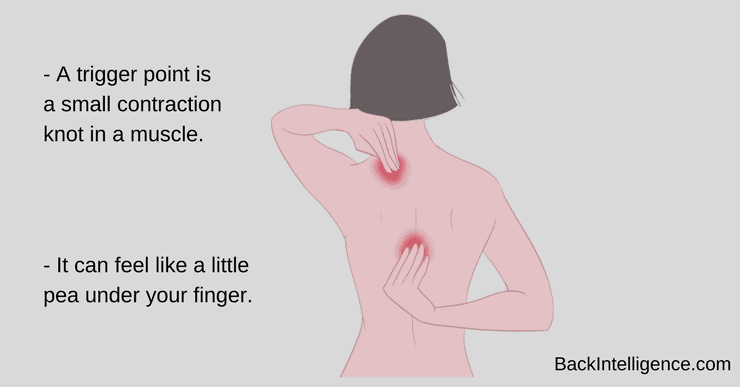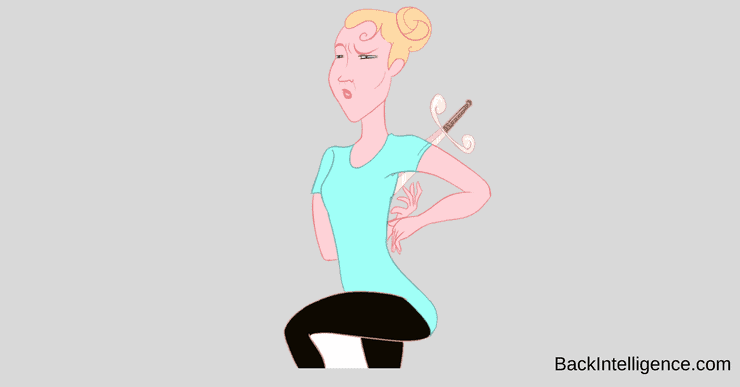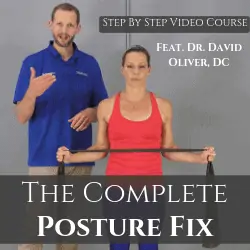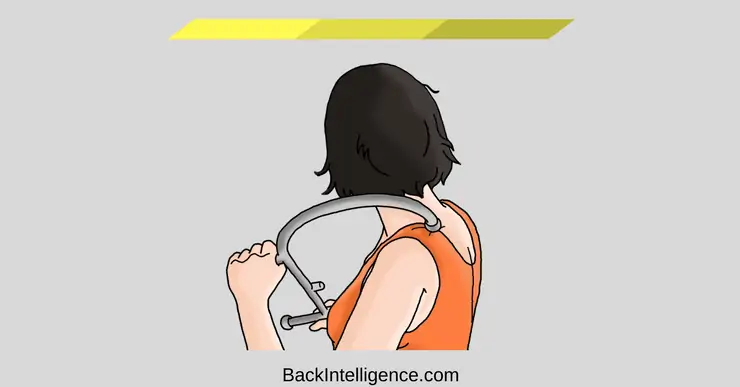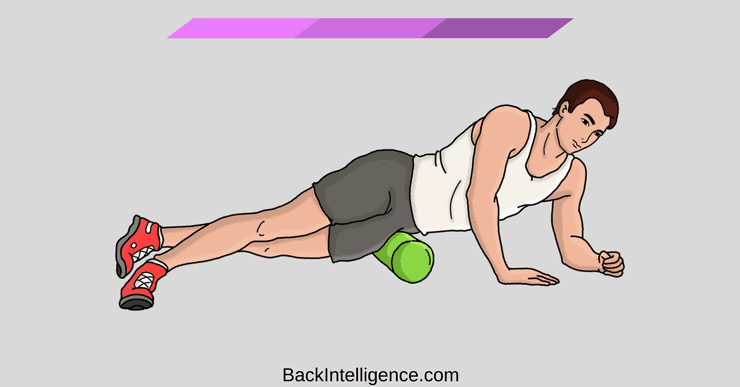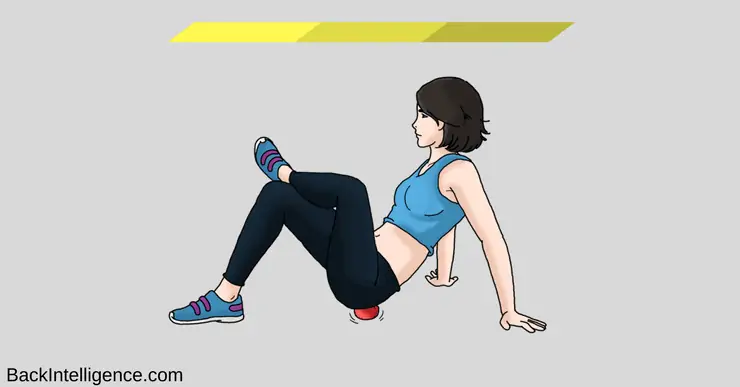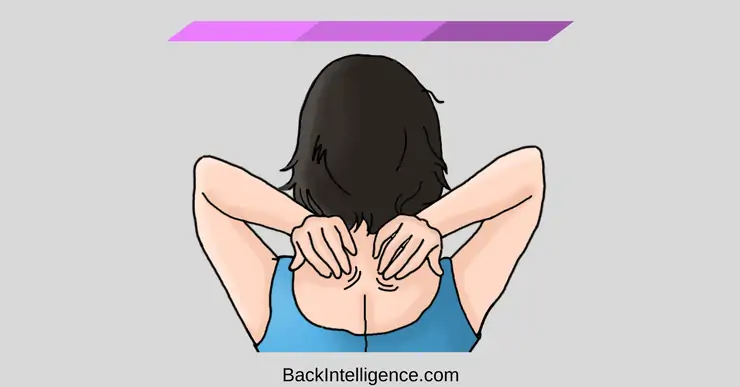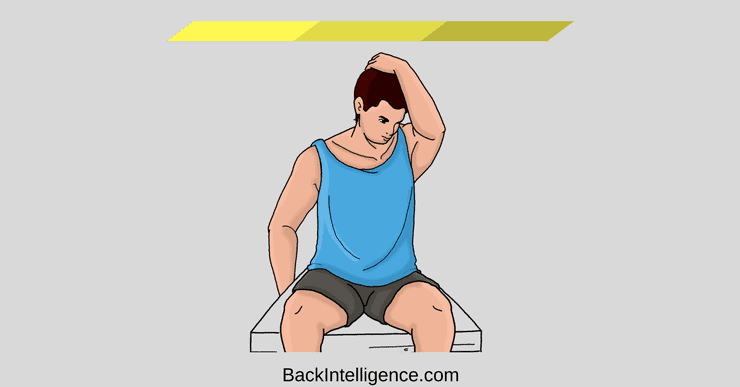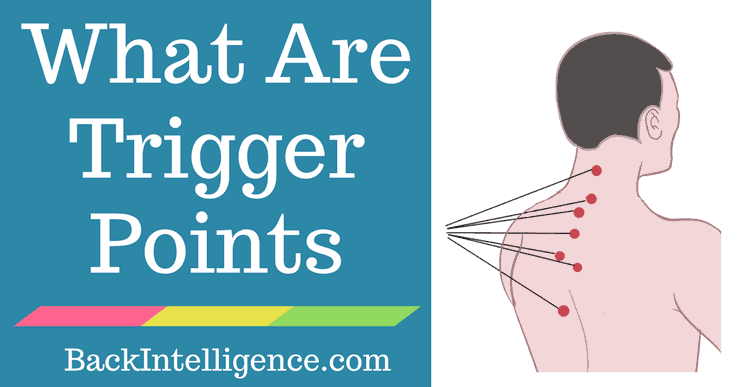
Trigger points (or Myofascial Trigger Points) are one of the most painful and lingering conditions resulting from Myofascial Pain Syndrome (MPS).
Myofascial pain syndrome refers to a focal hyper-irritability of muscle tissue that typically presents with a variety of clinical features including referred pain, decreased joint range of motion, and trigger points (the subject of this article).
You might be asking yourself, what are trigger points? Well, if you’ve ever had a “knot”, you’ve likely had a trigger point.
Continue reading to learn about these pesky little points and discover ways that you can treat them yourself…
What Are Myofascial Trigger Points?
Trigger points are defined as exquisitely tender spots that can be felt in discrete taut bands of hardened muscle tissue that produce localized and/or referred pain, that are associated with a twitch response.
In simpler terms, a trigger point is basically a small muscle knot.
If you try to feel the trigger point, it can feel like a little pea under your finger, that is located deep in the muscle belly.
You’ll also likely feel a tight band of tissue surrounding the trigger point. If your sense of touch is good, you may also feel the twitch response when you press on the trigger point.
Trigger points are classified as either latent or active, depending on their clinical characteristics.
Active trigger points
- Typically cause pain at rest
- On palpation cause a referral of pain (pain is felt away from the site of the trigger point)
- The pain is typically described as “spreading”, “traveling” or “radiating”
Latent trigger points
- Does not cause spontaneous pain
- May limit movement or cause muscle weakness
- You may not be aware that there is a trigger point until pressure is applied directly over the area
What do trigger points feel like?
Chronic myofascial trigger points can feel like a “sharp” stabbing type of pain…
Individuals that have trigger points typically report persistent localized pain that is often associated with a decreased range of motion in the affected area.
Although trigger points can occur anywhere in the body, muscles involved in maintaining body posture are most often affected, particularly the muscles of the neck, upper back, shoulders, and pelvic girdle.
Common muscles that have trigger points include:
- Upper trapezius
- Rhomboids
- Scalene
- Sternocleidomastoid (SCM)
- Levator scapulae
- Quadratus lumborum
A major issue with trigger points is that they can:
- Cause intense pain symptoms
- Complicate pain symptoms
- Mimic other pain conditions
Related: Self Massage Techniques for 9 body parts
To give you an idea of the extent of issues that can arise from trigger points, let’s look at some common areas that are affected and what can happen…
Trigger Points In Different Parts of The Body:
Trigger points in the head and neck region can manifest as:
- Headaches
- Tinnitus (ringing in the ears)
- Temporomandibular joint pain (jaw pain)
- Eye symptoms
- Torticollis
- Referred upper extremity pain
- May mimic carpal tunnel syndrome and/or tennis elbow
Trigger points in upper and mid back can manifest as:
- Pain between shoulder blades that feels like lingering stabbing.
- Pain can be felt at any moment – without any movement.
- Most likely contribute to a rounded shoulder posture
- Restricted range of motion in the back and shoulders
- Chronic neck pain
Trigger points in the shoulder and chest can manifest as:
- Chest pain, shoulder pain and radiating arm pain that extends to the elbow, and in some cases the ring finger
- Contributing to pain in between the shoulder blades
- Pain in the breast and/or hypersensitivity of the nipple
- Restricted arm range of motion
- Can mimic cardiac pain
Trigger points in the lower back can manifest as:
- Band-like pain across the lower back and possibly stomach area
- Severe pain upon standing
- Severe pain with coughing or sneezing
- Pain with standing and/or walking
- Pain when lying on the affected side
- Can produce an array of symptoms including nausea, heartburn and bloating
- Pain may resemble that seen with appendicitis
Trigger points in the buttocks (Gluteus maximus, Gluteus medius and Piriformis) can manifest as:
- Intense pain in the lower back
- Pain in hips area
- Pain worsens from sitting for long periods of time
- May mimic sciatica
Trigger points in the lower body (legs, feet) can manifest as:
- Pain in the calf and quadriceps muscles
- Pain on the inside and outside of the Knee
- Tightness of muscles in the IT band region
- Limited knee and ankle range of motion
Aside from the pain that is experienced with trigger points, you may also have numbness, tingling, weakness, and a reduced range of motion. In cases of chronic pain, caused by trigger points, you may also experience depression.
Causes of Trigger Points
When your muscles are injured or stressed they often form trigger points. The damage to the connective and muscle tissue can occur in several ways, including:
- Repetitive overuse injuries (i.e. typing, gardening, home improvements, certain spots such as tennis and golf, etc.)
- Prolonged loading on the body (i.e. heavy lifting, carrying babies, wearing backpacks or purses, etc.)
- Poor posture (i.e. forward head posture, rolled shoulders, etc.)
- Mental and emotional stress that results in muscle clenching
- Direct injury (i.e. sprain/strain, falls, fractures, tears, etc.)
- Prolonged inactivity (i.e. bed rest, prolonged sitting, etc.)
- Sleep disturbances
- Surgical scars
- Spinal surgery and/or joint replacement
- Nutritional deficiencies (i.e. vitamins B1, B6, B12, folic acid, and vitamin C)
- Structural abnormalities (i.e. leg length discrepancy)
Knowing the potential underlying cause of your trigger points is important to prevent their development and recurrence and also to eliminate existing trigger points.
Trigger Point Release – 5 Best Ways
If you’re looking for relief of trigger points, you may want to try these self-treatments that you can do from the comfort of your own home.
The Complete Posture Fix (With Dr. Oliver)
Fix your Rounded shoulders & Fwd Head posture, get out of pain and increase your mobility.
Learn More
1. Manual Trigger Point Massager
Why this technique – This handy massage tool can help to reach areas that are next to impossible to reach with other tools. Pressure applied to the muscles using the Theracane helps to maximize the flow of oxygenated blood to the muscles, which helps to restore normal muscle functioning by breaking up adhesions in the muscle fibers and tendons, thereby helping to reduce pain.
How to do it – Place the theracane knob in the area of the trigger point
- use your opposite hand to exert pressure on the tool to apply pressure on the trigger point
- once sufficient pressure is attained move your arm back and forth to move the knob across the affected muscle
- follow up by pressing the knob directly on the trigger point and holding for 5 to 10 seconds,
- relax and repeat 5 times
** a few minutes of Theracane use on one or two trigger points is sufficient, don’t overdo it or you’ll be sore the next day
**avoid using the theracane directly on your spine
2. Foam rolling
Why this technique – It’s a safe and relatively easy exercise that puts pressure on the trigger point, helping it to release. Contrary to what you might think, it’s the pressure that is applied, and not the rolling, that helps to release pesky trigger points.
How to do it – Place the foam roller around the area of the trigger point and:
- roll on the foam roller until you feel the right spot (it’ll hurt a little)
- once you’ve found the trigger point, stop and rest on the foam roller for about 10 to 20 seconds before moving to the next one
**make sure you’re only applying pressure to muscles, avoid applying pressure to bones and joints.
3. Massage Ball/Tennis ball
Why this technique – The goal of a massage ball is to apply pressure to a trigger point by essentially trapping it between your body and something else, such as the wall or floor. The point of using the ball is to reach spots that you’re unable to get to with your hands, or with other tools and is most useful on trigger points in the back and hips.
How to do it – Place the massage ball around the area of the trigger point
- lie down on it and explore the area by moving slowly until you’ve found the right spot
- adjust to apply the right amount of pressure (you want it to be a strong pressure, but not so much that you’re wincing in pain)
- relax as much as you can and wait for the sensation of pain to subside (this may take several seconds to a few minutes)
4. Self massage
Why this technique – It’s a safe and easy maneuver for trigger points that you’re able to reach and can be done anywhere without any equipment.
How to do it – First, locate the trigger point
- using your finger tips gently rub the trigger point in a circular motion
- follow this by applying firm pressure, directly on the trigger point, for approximately 1 minute
5. Stretch trigger points
Why this technique – Stretching, especially after doing some self release technique (above) will also lengthen the contracted knot and therefore release it. The key is knowing how to stretch the specific muscles in the right way.
How to do it – Find the muscle that has trigger points and figure out the best way to stretch that muscle. Most of the time it’s better to do static stretching where you would hold the stretch for at least 30 seconds at a time.
If you suffer from trigger points, you’re likely fed up with the nagging pain that they can cause. The good news is that there’s no need to panic, using the self-treatments discussed above can help to release trigger points and get your pain under control.
Learn More
Related:
How to fix upper back pain
7 Herniated Disc Exercises
How to stretch your spine – Cat & Cow Pose
How to fix forward head posture
Poor posture causes
How to fix rounded shoulders with exercise
Sources:
https://www.ncbi.nlm.nih.gov/pmc/articles/PMC4508225/
https://www.ncbi.nlm.nih.gov/pmc/articles/PMC3440564/
https://journals.lww.com/ajpmr/Abstract/2016/01000/Assessment_of_Myofascial_Trigger_Points_Using.9.aspx
http://asjsm.com/en/articles/21604.html
https://www.jospt.org/doi/full/10.2519/jospt.2011.3504
Licensed chiropractor, DC (Owner of Forme Clinic, Stoney Creek, ON, L8G 1B9)
Dr. Shaina McQuilkie graduated from Brock University in 2004 with a Bachelor of Kinesiology (Honours). She then attended D’Youville College, in Buffalo, New York and obtained her Doctorate of Chiropractic Degree in 2008. After graduating, Dr. McQuilkie practiced in a multi-disciplinary healthcare facility based in Hamilton, Ontario gaining experience treating a variety of musculoskeletal injuries.
